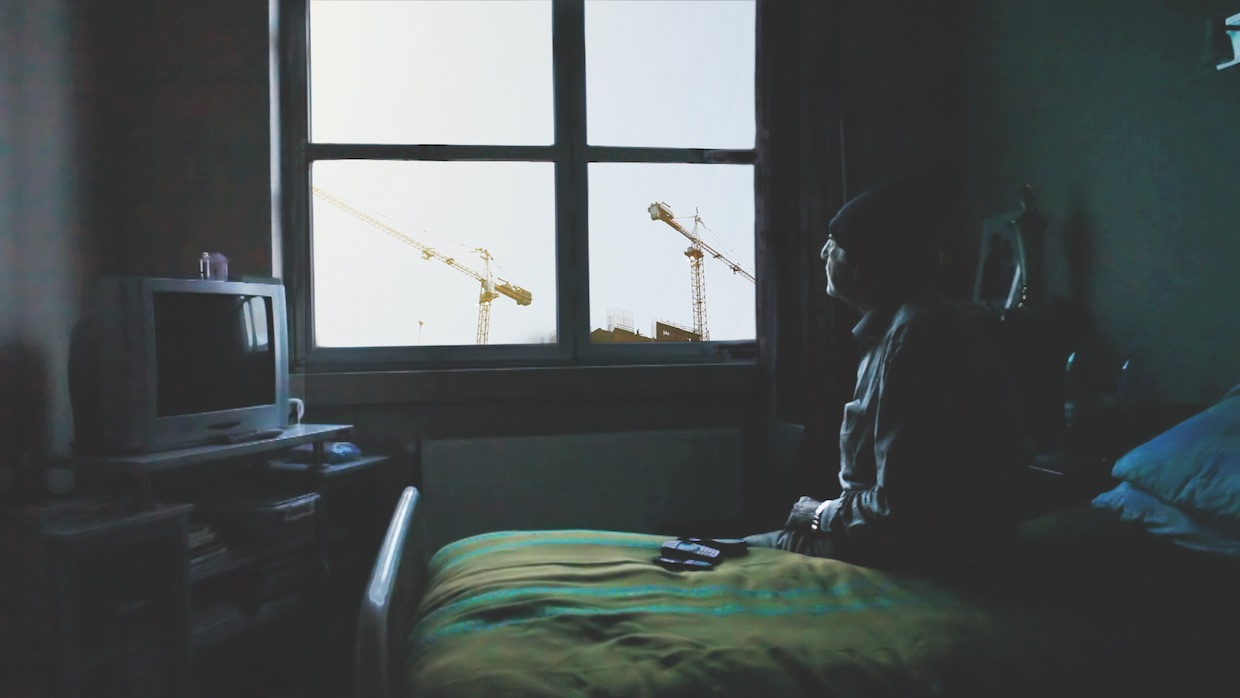When the producer Shelly Grizim mentioned in a Q&A following Shevaun Mizrahi’s DISTANT CONSTELLATION that only two shots in it used a moving camera, I started. It was something I hadn’t noticed, so alive and full of motion the film had been. There is nothing static about this most unusual of documentaries: its very stillness heightens and attends to the smallest change.
Most of the shots are of people talking, often in close-up. And so, much of the movement that is caught is in their faces. We see the tongue move between tooth and lip, the teardrop perch on the bag under the eye, the brow brighten or grow weary. Mizrahi’s camera – she is both director and cinematographer – loves the sorrows (and the joys) of their changing faces, to gloss a line from W.B. Yeats’ “When You Are Old.” Even the impassive visage has movement in it, imperceptible as the hands of the clocks that the camera also catches. As the hour changes slowly on the clock face, so do the human faces, although in ways harder to pinpoint. Our own faces, after all, change noticeably only between the times we look in the mirror. Who has seen the appearance of the first grey or the raising of a mole?
There are other frames within Mizrahi’s shots, and more movement inside them. The TVs, showing Turkish programs, are the most unsubtle, and windows the subtlest: it is a significant moment when someone draws a curtain. Through the windows a city changes. Cranes move like divining rods over holes dug in the ground. Workers busy themselves. Seasons change, birds cluster, and snow swirls (so does the wind, for sound has its own motion). Inside, Mizrahi’s subjects speak most of memories, of career, family, trauma, intimacy. Her camera is not a fly on the wall; they know it is there. This is not a movie of candid shots but of candid people. One shares his sex life, plays the piano, and flirts. Another remembers the Armenian genocide. A once famous photographer takes new pictures, although his sight has faded. They have their beds and dressers and medicines. Outside the windows, things move less slowly, and the future has more to do with it. The workers talk of prospects in life and put on hardhats for the day ahead.
The camera exposes the layers and contradictions of time: clock, calendrical, seasonal, personal, bodily, cosmic, historical, musical, memorial, circular, linear, marked, unmarked. Time, of course, is relative. The sweet indifferent cats have their own sense of it (or not), and two men conversing in an elevator that goes up and down incessantly is as much an illustration of relativity as tossing a ball back and forth on a moving train.
Film, as the critic Stanley Kauffmann wrote years ago, has a unique relationship to death. We can watch again and again the great stars and bit players of the past, for all we can see vibrant and alive. This more than we know is at the core of the cinema’s power. DISTANT CONSTELLATION was shot over six years and is dedicated to those several in it who died before its completion. Its setting is a retirement home in Istanbul without a caregiver in sight, and its still vibrant stars, living and dead, do not seem so far away.
DISTANT CONSTELLATION played at Metrograph in New York City. Check listings for viewing options. Header photo is a shared image from Grasshopper Film.
